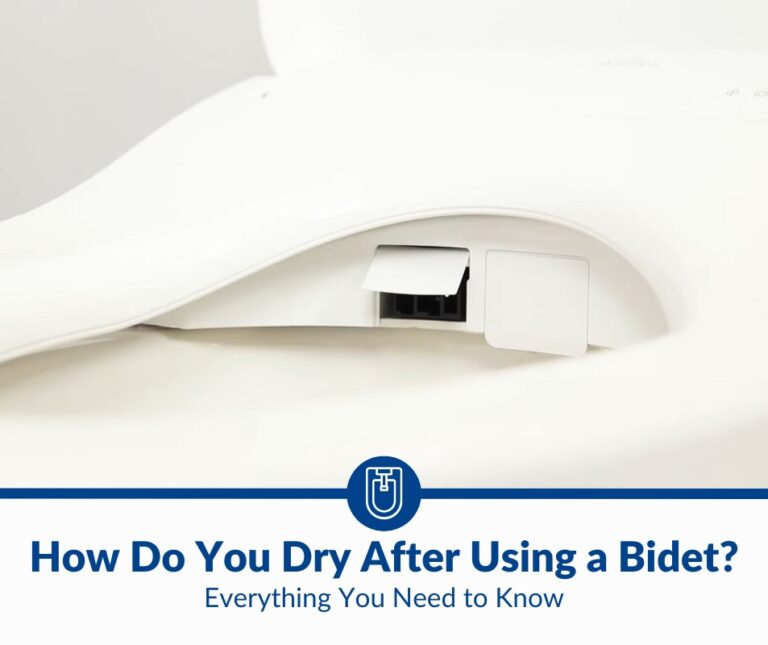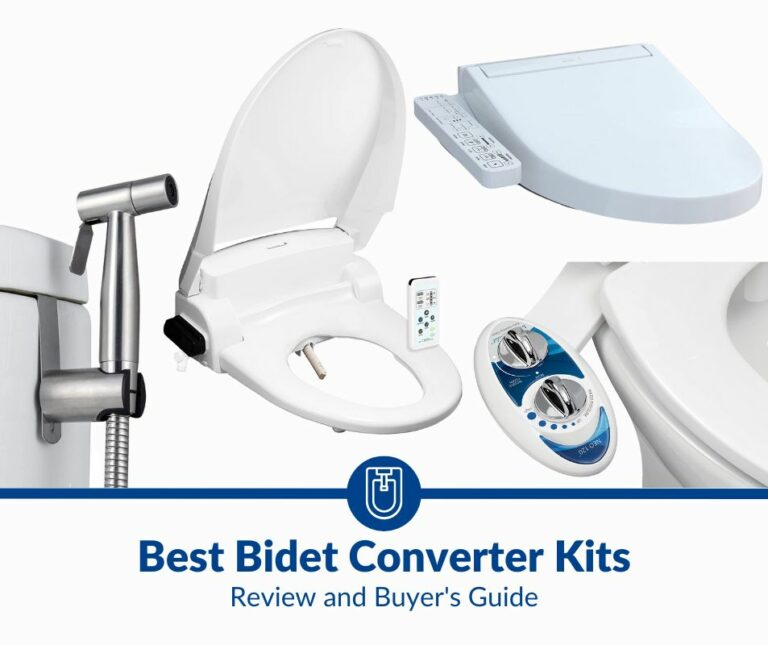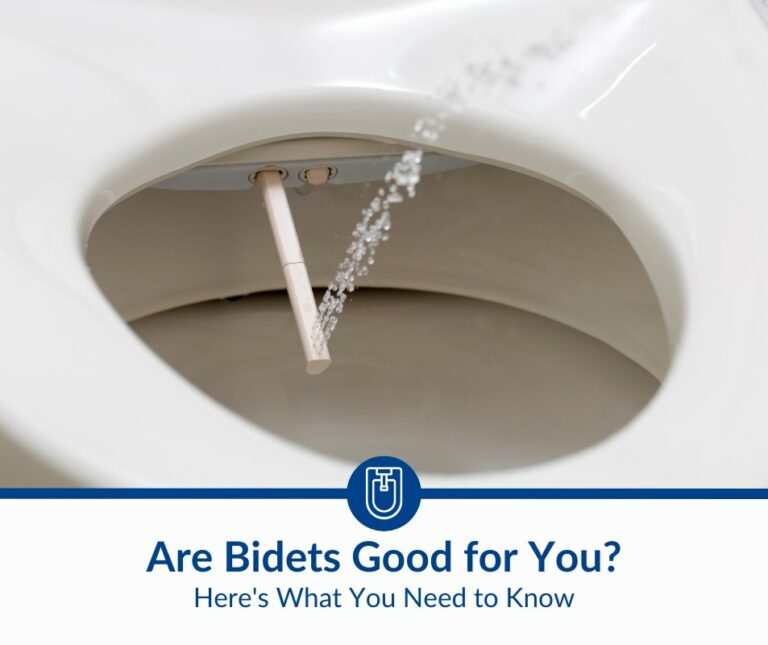Are Bidets Safe for Women? Truth About Women Using Bidet
For many women, personal hygiene is a top priority. However, it is crucial to be careful because many unsafe products and inventions claim to help women keep their genitalia clean but end up harming them. So, are bidets safe for women?
Bidets are safe for women when they’re used correctly. They offer a gentle yet thorough wash for women’s genitals. Bidets clean much better than toilet paper and are recommended for postpartum use to ease pain and reduce the risk of infection. Bidets are also ideal during menstruation.
Please continue reading to learn more about bidet use for women. I will highlight the potential risks and benefits and elaborate on how women should use bidets to avoid the risk of infection. I will also share some tips on cleaning a bidet to keep it hygienic.
Women Using Bidets: Risks and Benefits
For women, using a bidet has both risks and benefits, and they are discussed in detail below:
Are Bidets Sanitary for Females?
Bidets are sanitary for females when they are appropriately used and maintained. The water source for a bidet should also be hygienic; otherwise, there is a risk of getting urinary tract infections.
Bidets can provide an excellent cleaning alternative for women because they are more efficient than toilet paper. However, when improperly used or maintained, they possess various risks.
Risks for Women using Bidets
The following factors make bidet use unsafe for women:
- Using the wrong procedure
- Dirty or poorly maintained bidets
- A bidet with a contaminated water source
- Having a high-risk pregnancy
- Overusing a bidet
- High bidet water pressure
- Bidet water that’s too hot
These risk factors expose women to the following health issues:
Urinary Tract Infections (UTIs)
Urinary tract infections are caused by bacteria entering the urethra, which can result from the following:
- A dirty bidet
- Using the wrong bidet procedure (washing back-to-front)
- A bidet with a contaminated water source
Using a dirty bidet could contaminate the water and introduce harmful bacteria into your urinary tract through the urethra, resulting in a UTI. Moreover, if the water source is infected, it could also contain harmful bacteria that give you a UTI.
On the other hand, using incorrect bidet procedures, such as back-to-front cleaning, can move bacteria from the anus into the urethra and give you a UTI.
Women are more prone to UTIs because the anus and urethra are closely located. Some indicators that you may have a UTI include:
- Pain or pressure in your pelvic area
- Frequent urges to urinate
- Urine may be bloody
- Painful urination
- Cloudy urine
- Leaking urine
- Painful sex
- Vomiting
- Fatigue
According to this study, women with Diabetes Mellitus are at a higher risk of UTIs due to impaired immune systems.
Unfortunately, your body can develop antibiotic resistance because UTIs are treated with antibiotics. The best way to prevent this is to avoid infections in the first place by using proper bidet procedures and cleaning your bidet as often as possible.
Read Also: Do Bidets Cause UTI? Here’s What You Need to Know
Altered Vaginal Microflora
Research conducted on female bidet users in Korea, Japan, and India reported that they had altered vaginal microflora. This condition heightened their risk of bacterial vaginosis. The researchers speculate that this could result from either depriving the normal microflora or introducing bacteria from fecal matter into the vagina.
Yet another study reported that regular bidet use is associated with a higher rate of unusual vaginal colonization by Gram-negative bacteria.
Vaginitis is not a severe health concern, and it is often asymptomatic. Still, it can be pretty uncomfortable due to the following symptoms:
- Vaginal itchiness
- Foul-smelling discharge
- Abnormal consistency of discharge (may be thinner or more watery)
- Unusual discharge color
The risk of altered vaginal microflora with bidet use may increase due to the following:
- Using a bidet-seat
- Incorrect bidet-use procedure
- Overusing bidets
- Poor personal hygiene
- Wearing restrictive clothing
Increased Risk for Nosocomial Infections
Hospital bidet use is associated with an elevated risk of nosocomial infections. These are infections acquired from a hospital visit (absent during hospital admission).
Among the common nosocomial infections are the following:
- Urinary Tract Infections
- Skin Infections
- Pneumonia and other respiratory infections
- Gastrointestinal infections
- Surgical wound-site infections
Using a shared bidet in a hospital is not recommended because there is a substantial risk of cross-infection among patients.
Read Also: Can Using a Bidet Cause Infection? Here’s the Truth
Anal Itching and Fecal Incontinence
A study found that chronic bidet use could potentially cause anal itching (also called anal pruritus) and fecal incontinence (relaxing of the rectal sphincter that causes an inability to withhold feces).
In addition, the study also reported a few cases of anal fissures resulting from bidet use, moreso when more substantial water pressure is used.
Upon discontinuation of bidet use for four weeks, patients reported a reduction in previously reported anal symptoms, leading researchers to conclude that they were somehow related to bidet use.
Preterm Birth in High-Risk Pregnancies
Chronic bidet use is also associated with a greater risk of preterm birth in high-risk pregnancies: in this case, women admitted for preterm labor.
A study of 204 pregnant women showed that 87.3% of high-risk pregnancy bidet users had a preterm birth (earlier than 37 weeks) as opposed to 70% of non-bidet users.
This notable margin is enough to discourage habitual bidet use for high-risk pregnant women, especially in their third trimester. Safer alternative methods of cleaning after toilet use should be considered first.
Benefits of Women Using Bidets
When used correctly, bidet use for women has several potential benefits, and they include:
Cleans More Efficiently Than Toilet Paper
A bidet cleans better and with much less effort than dry wiping with toilet paper. In many instances, it takes several wipes and plenty of tissue to wipe after a bowel movement, and you are still unlikely to get completely clean. With a bidet, you are guaranteed a thorough cleanse if you use it correctly.
Bidets help you conserve toilet paper because you use very little. This is good for your toilet because there will be less clogging from toilet paper buildup. It is also suitable for the environment because many trees are cut down yearly to manufacture toilet paper.
Read Also: Do You Use Toilet Paper With a Bidet?
Offer a Better Cleaning Experience
Bidets are more gentle on the skin than toilet paper. They are also safer than using wipes that may cause allergic reactions on your skin because of the chemicals they contain.
Bidets also leave the user feeling clean and fresh, which is essential to many women who prioritize personal hygiene.
They are also easier to use and less hands-on than toilet paper or wipes.
Ideal for Use During Menstruation
A bidet is ideal during menstruation because it cleans thoroughly and eliminates the need to handle unsightly secretions. It also leaves you feeling refreshed, which can boost your confidence during your period.
A warm water bidet during menstruation may relieve period cramps and vaginal irritation. You can use a bidet regardless of the menstrual product that you are using.
Recommended for Postpartum Use
After a vaginal delivery, most women experience pain or soreness in their genital or perianal area. This can make for a challenging bathroom experience and an even harder cleaning up.
However, a bidet can improve this experience by offering a gentle cleanse for sensitive areas. It is also simpler to use, which makes the postpartum recovery process more manageable.
Postpartum bidet use helps to prevent infections by thoroughly cleaning all excretions and secretions from the genital area. It can be used in place of a sitz bath, but you need to use low water pressure to protect the area.
A Good Way To Freshen Up After Sexual Intercourse
A bidet works as a mini-shower for the vaginal area after sexual intercourse. It is an easy and quick way to freshen up. Furthermore, bacteria and body fluids that may have been exchanged during intercourse are rinsed off (however, this does not reduce the risk of STIs or pregnancy).
Using a bidet after sex is safe because it does not upset the vaginal pH, which can have adverse side effects.
May Soothe Hemorrhoids
Bidet use may be better for hemorrhoids than dry-wiping because it is gentler on the skin. The water also helps to relax the anal sphincter and stimulate more effortless bowel movements. A bidet cleans much better than toilet paper, thereby reducing the chances of infection.
However, as previously mentioned, bidet use may also aggravate anal symptoms when used excessively. Therefore, the solution lies in moderate bidet use or low water pressure to prevent further irritation.
Keeps Hands Cleaner
With a bidet, you barely use your hands. This reduces the likelihood of contaminating them with fecal matter or urine, unlike wiping (which often requires several wipes that may contaminate your hands). Women with a heavy menstrual flow also consider this a relief because it is an easier way to clean during this time of the month.
According to a study conducted in a nursing home, bidet use also encourages better hygiene practices for users. Bidet users have comparatively better overall hygiene than non-bidet users.
Nonetheless, you must wash your hands after using the bathroom even though you used a bidet because you may have touched contaminated surfaces or objects.
Read Also: Are Public Bidets Sanitary? Here’s What You Need to Know
Better for Women With Mobility Challenges
Women with mobility challenges can benefit from bidet use because it requires less strenuous movements than toilet paper or wipes.
For these women, a bidet seat would be most suitable because it is installed on the toilet and is operated by pressing buttons on the side of the toilet seat.
Seniors can also benefit from bidet use. Bidets encourage better hygiene by providing comfort when cleaning after using a toilet.
Bidet use for seniors could also boost independence and confidence for seniors with mobility challenges because they need less assistance when using the bathroom.
Still, bidets must be used alongside other support features, such as grab bars and non-slip mats, to prevent accidents due to other factors, such as slippery floors.
How To Safely Use a Bidet (for Women)
You must follow the correct procedure to derive the full benefits of using a bidet. Below is a guide to safe bidet use for women:
First, Use the Toilet
A free-standing bidet should not be used as a toilet. You should only use a bidet after using the bathroom to clean fecal matter or urine after using toilet (this is not necessary if you use the bidet to freshen up after sex).
You may wipe before using the bidet, though it is not necessary. It does help to keep the bidet a little cleaner, moreso for freestanding bidets. If you choose to wipe, keep the used toilet paper inside the bidet, as this can clog up the drainage.
Check the Water Temperature and Pressure
Even though the bidet is in regular use, it is always best to confirm that the water pressure and temperature suit you. Check that the water isn’t hot because it could cause scalding. On the other hand, intense water pressure could lead to long-term anal sphincter damage. It could also aggravate anal symptoms such as hemorrhoids and anal fissures.
The water should be warm, with low-to-medium water pressure. You should also check that it is clean because dirty water can cause a severe infection.
Position Yourself Correctly
The position you hold should depend on the type of bidet you use. Here is a helpful guide:
- Bidet seat: When using a bidet seat, you don’t need to readjust yourself since the bidet is installed in the toilet bowl and is operated by pressing the buttons on the side of the toilet seat.
- Free-standing bidet: Squat or straddle over the free-standing bidet seat with your front side facing the water nozzle. The nozzle should be pointing toward your genital area.
- Hand-held bidet: While seated on the toilet seat, hold the bidet between your legs underneath you. Point the nozzle toward your genital area.
Clean With the Bidet
Turn on the bidet to start cleaning. You should clean back-to-front to avoid contaminating the urethra with fecal matter. Avoid using soap because it may contain harsh chemicals that interfere with the normal vaginal microflora and result in other complications.
Give the bidet enough time to clean–up to a minute would be ideal. However, do not overuse the bidet because it can lead to anal complications.
Some bidet seats have the ‘feminine wash’ option, which directs the water toward your vulva in a front-to-back manner. If your bidet has this option, it would be best to use it.
Dry Adequately
Improper drying after bidet use can cause yeast infections because the excess moisture encourages yeast overgrowth. Additionally, poor drying methods can be too harsh on sensitive skin and irritate it.
To dry yourself after bidet use, pat dry with toilet paper or a clean towel. Before using a towel, follow these guidelines:
- Check that the towel is soft enough to dry the sensitive skin around your genitals without being too rough or abrasive.
- Never share a bidet towel because it can lead to an exchange of bacteria between people.
- Clean your bidet towel as often as possible because dirty towels harbor harmful bacteria and fungi that can make you sick.
After using the bidet, wash your hands. Even though you didn’t touch the dirty area, you may have touched a contaminated surface around the bathroom. Proper handwashing keeps off various diseases and infections.
Read Also: Do Bidets Have Dryers? Everything You Need to Know
How To Keep Your Bidet Clean
A dirty bidet is unsanitary and unsafe for women. Regular bidet cleaning is crucial to keeping it safe and hygienic.
Here are some tips for keeping your bidet clean and sanitary:
- If your bidet has a self-cleaning feature, use it every day.
- Never use an abrasive material to avoid scratching the porcelain when cleaning your bidet.
- Thoroughly clean your bidet at least once a week with vinegar or dish soap. You may need to clean more often if many people use the bidet.
- To eliminate tough stains on your bidet, fill the bidet bowl with a mix of water and vinegar and let it sit overnight. Gently scrub it down in the morning and repeat the process if it is still not clean. Avoid using harsh cleaning agents because these can damage the porcelain.
- Remember to lift the toilet seat and clean it underneath for bidet seats.
- Inspect your bidet’s water source to ensure that it is sanitary.
- Keep up with any maintenance needs for your bidet to prevent leaks and spills.
Before cleaning your bidet, disconnect it from the water source to prevent spills. Remember to connect it again once you finish.
Final Thoughts
Using a bidet has many potential health benefits, but serious risks are also associated. Bidets are safe for women when kept clean and used appropriately. However, incorrect use exposes them to various infections.
Whenever possible, avoid using public bidets because they are likely to harbor various bacteria from different users. If you must use a public bidet, wipe down the nozzle with a damp cloth or toilet paper.
Finally, regular cleaning and maintenance of your bidet are crucial to keeping it hygienic.







